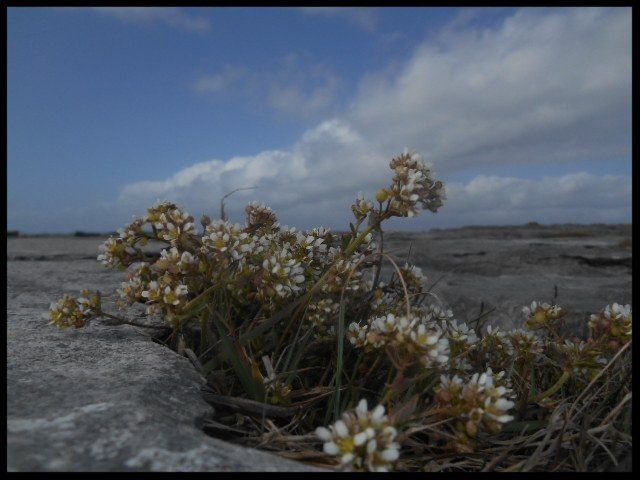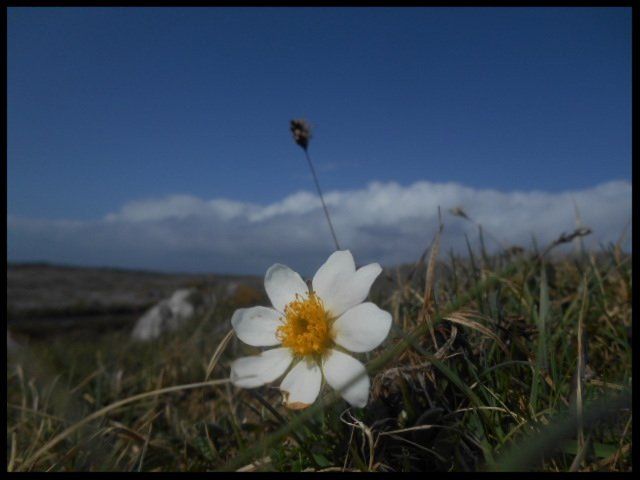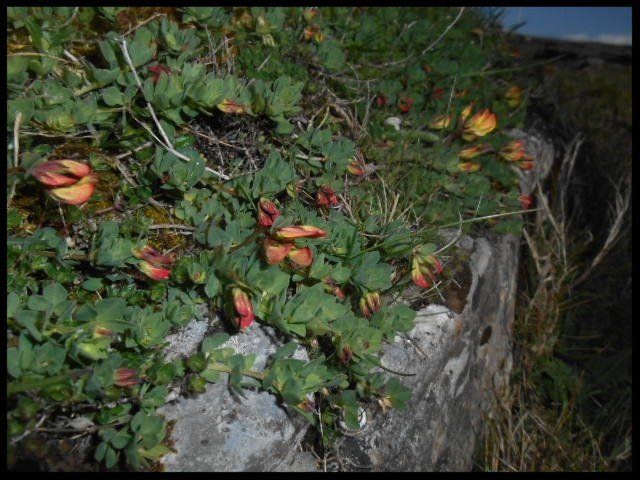5 Flowers in 1 Townland ; 2nd May 2018.

INTRODUCTION
The Burren has just begun to bloom. The apex of the blooming period will be mid-May to mid-June. The Burren wild flower extravaganza is one of Europe's great annual natural history events. The grey limestone pavement landscape in winter is transformed in early summer into a mosaic of wild plants with origins in different climatic zones in the world.
Here are five plants I photographed in the coastal Burren townland of Ballyryan on the 2nd of May this year. Text accompanies each image.....
SPRING GENTIAN
The unofficial symbol of the Burren region. A plant with a short stem and five brilliant blue petals. A metallic blue. They say no photograph can do full justice to the plant. Best seen with the naked eye.
It is a rare wild flower in the north of Europe. Spring Gentian grows in a few scattered limestone localities in the west of Ireland. Teesdale in England is the only other region where it is found in Northern Europe.
The gentian is one of the earliest flowers of the year. My colleague Mary Howard recorded it for the first time this year on St Patrick's Day - the 17th of March.
An Illryian king, Gentiana, is credited with first identifying the medicinal use of the flower. In the past the folk belief was that death would follow if the flower were picked. It was also believed that if an individual brought the gentian indoors he or she would be struck by lightning.

COWSLIP
The cowslip is one of three primulas which grow in the Burren and Ireland. The other two are the primrose and the false oxlip. "Slip" is an old English term for dung . Anywhere the cow lifted its tail in the past, one could find the cowslip. However, that was before the advent of agri-chemicals. The cowslip has now been eradicated from most of the fertile lowlands of Ireland due to "techno-farming".
The Burren winterage land, (the land whereto the cattle are transferred from November to April each year), remains a stronghold of the cowslip thanks to the light grazing and the absence of chemicals. Cowslips on farmland are an indicator of "sympathetic" agriculture.
Bealtaine
was a great agricultural festival in Ireland with pre-Christian origins. The festival took place at the start of May and it is still celebrated in Ireland to a limited extent today. One of the many rituals that took place on Mayday in the past was the rubbing of cows' udders with cowslips to protect the milk.
Reference - Mac Coitir, Niall. Irish Wild Plants Myths, Legend and Folklore ,
The Collins Press, 2006.

COMMON SCURVYGRASS
Common Scurvygrass is a coastal plant. It is a member of the cabbage family. The plant is rich in Vitamin C and was used by sailors in the past on long voyages. Sailors suffered from Vitamin C deficiency due to lack of consumption of citrus fruits which would have rotted on long journeys. The deficiency causes a disease called scurvy. Today the plant is used in herbal medicine as an antidote to skin irritation, canker sores, gum disease and nosebleeds.
Scurvygrass is found all around the coast of Ireland - thriving on the salty soil and the lashings of salt spray from the sea.
The plant's name in Irish/Gaelic is biolar trá
which translates at strand cress. Scurvygrass is small and cress-like. The cress is another plant of the cabbage family.

MOUNTAIN AVENS
This is my first sighting of the plant this year - as in photograph taken May 2nd at Ballyryan. The avens looks like a poached egg and almost always has eight petals...hence Octopetala
in its name in Latin.
Mountain avens is of Arctic origin and is the national symbol of Iceland. Remarkably It grows in the Burren alongside orchids originally from warmer, southern climes. The plant has a limited distribution in Ireland and Great Britain.
The flower tends to carpet the landscape extravagantly. It was Robert Llloyd Praeger, the outstanding 20th century naturalist, who said : "He who has viewed the thousands of acres of the Arctic-alpine plant in full flower on the limestone of the Burren region of Clare, from hill-top to sea level , has seen one of the loveliest sights that Ireland has to offer".
Reference - Praeger, Robert Lloyd. The Botanist in Ireland,
Hodges, Figgis & Co., 1934.

BIRD'S FOOT TREFOIL
"The Father of Burren botany" ,Frederick Foot, first recorded bird's foot trefoil in the 1860s. An eclectic plant and thus very widespread in the Burren - home on high ground and at sea level , on damp ground and dry.... Foot said that it is "to be met with in every direction".
Bird's foot trefoil is a member of the pea family. The pea pods resemble the feet of a bird. Hence bird's foot in English or crobh éin
(bird's foot) in Gaelic.The name is in part misnomer as the plant is not trefoil (three leaved). It is so named as three of the five leaves are most prominent.
The lemon-coloured flowers with red streaks are a striking aspect on the landscape. One of its folk names in the U.K is bacon and eggs.
The flower provides nectar and pollen to the caterpillar of the Common Blue Butterfly and also the adult.
It is used in natural medicine as an anti-spasmodic and a sedative. It is also used as a tonic for the heart.



